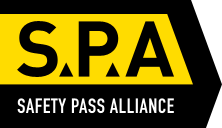Date: 2 January 2018
Companies and people working in food manufacturing are being told they must pay closer attention to how they manage workplace health risks or face serious penalties.
The Health and Safety Executive’s (HSE) programme of proactive inspections will review health and safety standards in food manufacturing businesses across the country, and the sector is being warned that a programme of unannounced inspections will begin today.
The inspections will focus on two of the main causes of ill-health in the sector which are currently occupational asthma from exposure to flour dust in bakeries, cake and biscuit manufacturers and grain mills and musculoskeletal disorders (MSDs) – predominantly lower back pain and upper limb disorders from manual handling activities and repetitive tasks across the sector.
The inspection visits come as HSE recently released its Manufacturing sector plan which prioritises the reduction of cases of occupational lung disease and MSDs.
Exposure to flour dust is the UK’s second most common cited cause of occupational asthma. MSDs are the most common type of work-related illness in food manufacturing with handling injuries, accounting for around 20% of reported employee injuries (RIDDOR). HSE insists that such ill-health can be prevented when organisations have proper risk control systems in place.
The inspections will ensure measures are being taken by those responsible to protect workers against health risks and HSE will not hesitate to use enforcement to bring about improvements.
HSE’s head of Manufacturing Sector John Rowe, said: “The food manufacturing sector is made up of over 300,000 workers and its health and safety record needs to improve. This inspection initiative will look to ensure effective management and control of targeted health risks.
HSE is calling on anyone working in the industry to take the time to refresh their knowledge of our advice and guidance, available for free on our website.
Food manufacturing companies should do the right thing by protecting workers’ health; everyone has the right to go home healthy from work.”
Notes to Editors:
The Health and Safety Executive (HSE) is Britain’s national regulator for workplace health and safety. It aims to reduce work-related death, injury and ill health. It does so through research, information and advice, promoting training; new or revised regulations and codes of practice, and working with local authority partners by inspection, investigation and enforcement. uk[1][1][1]
More about the legislation referred to in this case can be found at: gov.uk[2 [2][2]]
HSE news releases are available at http://press.hse.gov.uk[3][3]
Attend an SPA Food and Drink passport course to find out how you as an individual can remain compliant and trained appropriately.























